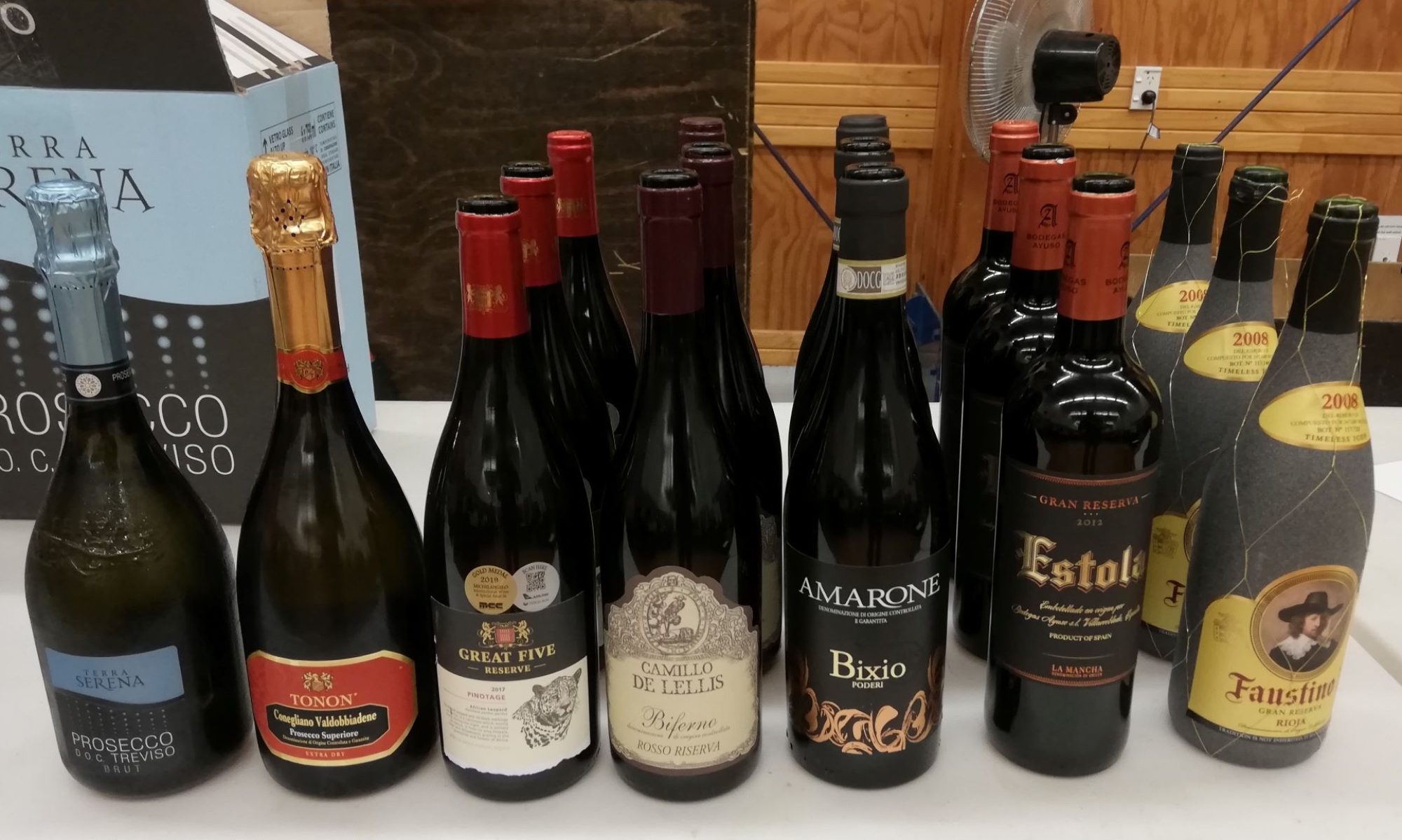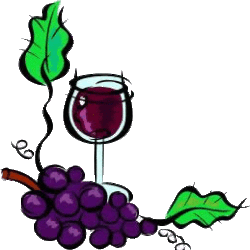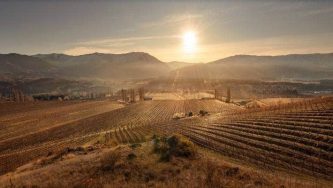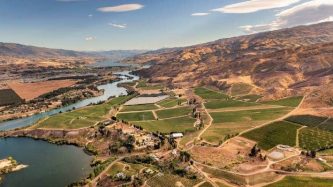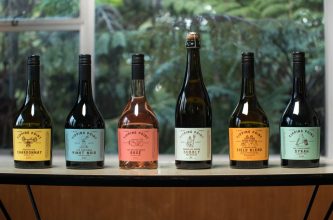NZ Herald | 5 Jun, 2023 12:00 AM
Industry thinking about the future as big changes loom.

An experimental vineyard is one of the ways that science will ensure the world will still be able to enjoy New Zealand wine as the climate changes.
With the ability to fine-tune the environmental conditions, scientists at the Plant & Food Research Experimental Future Vineyard at the New Zealand Wine Centre -Te Pokapū Wāina o Aotearoa – will be able to mimic expected climate scenarios of the future.
Plants grown in the new 600sqm facility which is due for completion in 2024, will help scientists understand how different temperatures, soil types and water availability may impact grape production in the future, and provide the industry with key knowledge to help it adapt.
The experiment comes as a Plant & Food Research study suggests areas of the North Island suitable for growing Sauvignon blanc vines are likely to substantially reduce this century as climate change brings rising temperatures.

However, Plant & Food Research Science Group Leader, Fruit Crops Physiology, Dr Jill Stanley, says it is not all bad news for connoisseurs of the wine – one of New Zealand’s most popular varieties – as modelling under both low and high temperature rise scenarios also shows areas of the South Island are likely to increase in growing suitability.
“Moderate gains are predicted in Marlborough, Canterbury and central Otago under low rise scenarios, but substantial gains under higher temperatures,” she says. “By mid-century, there may be an opportunity for Canterbury and parts of Otago to become global Sauvignon blanc powerhouses, alongside Marlborough (New Zealand’s current prime Sauvignon blanc producing region, accounting for 72 per cent of output).
“So, if you like a drop of New Zealand Sauvignon blanc, you’re probably going to be okay.”
Chief Sustainability Officer, Dr Roger Robson-Williams, says Plant & Food Research is working with a variety of industry sectors, to understand what and where crops can be grown in the future. By using computers to jump in a ‘virtual time machine’, scientists can see what rainfall patterns and temperatures are going to look like in different parts of Aotearoa.
“Climate change is going to affect what we eat over time,” he says. “For wealthy nations, the impact may seem quite small at first, as they will generally have the resources to secure more-or-less whatever foods they want for the time being.
“For less developed countries, climate change will produce real issues in terms of food security; not just impacting the type of foods available but, more worryingly, it will lead to absolute scarcity of food with ever-increasing risks of crop failures around the globe. We want to make sure that New Zealand can continue to grow good, nutritious food, for ourselves and for others.”
Robson-Williams says the first step is to get a picture of what crops will grow well and where; these may be crops we already have, or new crops.
“We’re also looking at improving our current crops so they can cope better with the impacts of climate change – be it drought tolerance, resistance to different pests and diseases, or just the ability to grow in hotter conditions,” he says.
Stanley says the research contains a key message for growers and the industry: “It’s increasingly important growers start thinking about what the future holds and the adaptations they can take to mitigate and reduce the effects of climate change.
“While we don’t know for certain what is ahead as many different factors affect how crops are grown, the research is designed to give the sector some idea of what could occur,” she says.

As well as changing to varieties that are more suited to the changing climate, Stanley says growers could adapt the way they grow crops, such as using covers to protect them from increasing risk of rain and hail. They could change the crops they grow (for example growing avocados or apples instead of grapes) or consider expanding into different regions.
Dr Zac Hanley, General Manager Science New Cultivar Innovation, says that the changing climate might also create new opportunities for New Zealand’s horticulture sector.
“We’re bringing new crops into New Zealand, testing things that might be able to cope with future conditions. For example, New Zealand might be able to successfully grow sub-tropical plants like dragon fruit as our climate changes, and that could be a potential new industry for growers in these warmer regions.”

A joint New Zealand-Viet Nam dragon fruit breeding programme has resulted in the development of the first varieties of dragon fruit that could form the basis of a New Zealand sector.
Supported by the Ministry of Foreign Affairs and Trade, the New Premium Fruit Variety Development project has bred three new varieties of dragon fruit which will be commercialised globally by VentureFruit, a T&G Company. Initial testing and evaluation is underway to determine how these new varieties could be commercially grown in Northland.
Plant & Food Research is also looking at the viability of commercial production of other non-traditional crops, such as peanuts in Northland and almonds in the Hawke’s Bay, that may do well in New Zealand’s future climate.

Growing indoors, away from the weather, is also an option. Dr Samantha Baldwin, a Science Group Leader at Plant & Food Research, says their research is attempting to make sure New Zealand can deliver food than can be grown long into the future, despite the climate issues being experienced.
She says indoor growing could help food security “because we can basically recreate the entire environment within a controlled area so we can take out the risk not only of erratic weather but also seasonal weather. We can create all seasons in one day if we really want.”
Stanley says that climate change will potentially have major impacts on New Zealand and growers are already thinking about how they will respond.
“The horticulture sector needs to weigh the costs of adaptations or mitigations to climate change against the economic impact of doing nothing,” she says. “It is great to see industry bodies starting to think about what these changes might mean and to plan accordingly.”
For more information: www.plantandfood.co.nz
